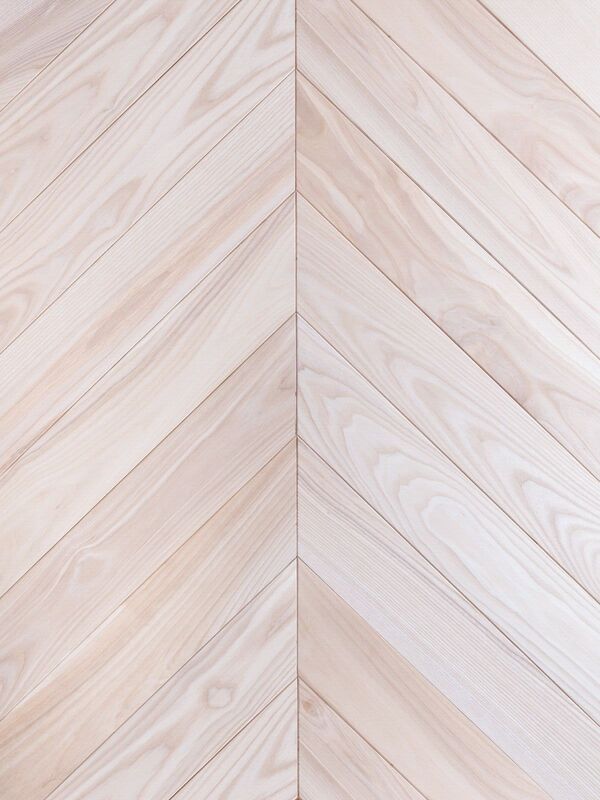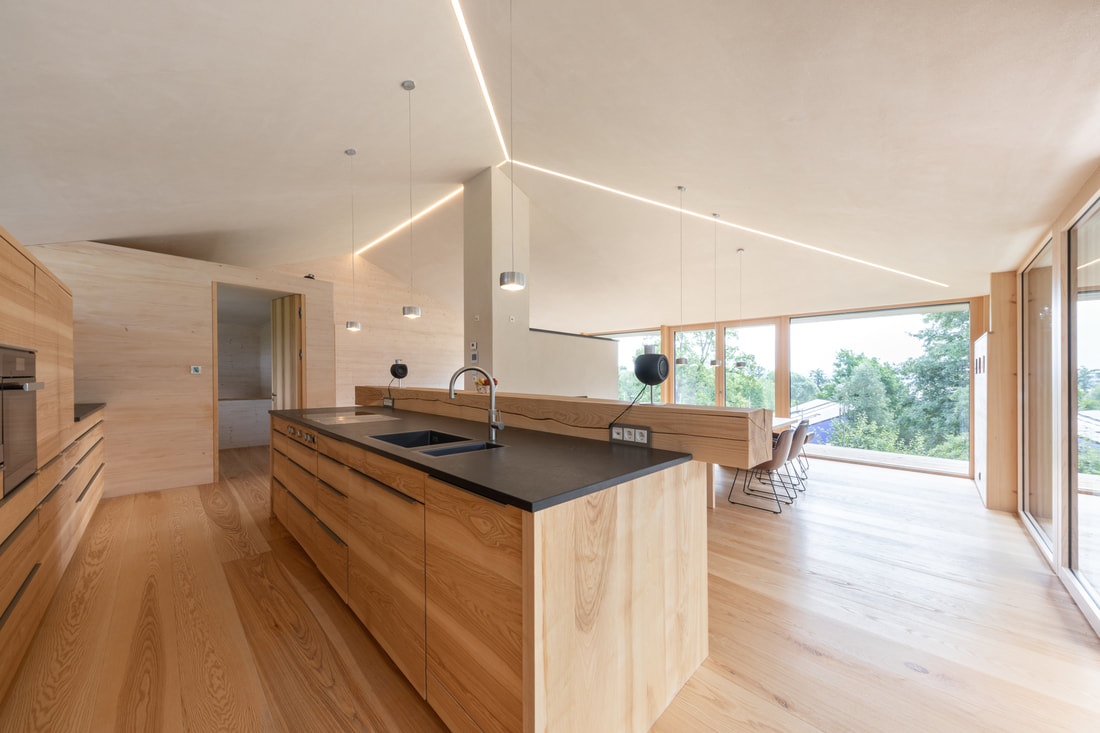|
Ash is without question one of the most versatile woods available in the world of hardwood flooring, with many styles – from ash parquet flooring, to ash wide plank wood flooring – enjoying robust popularity. The ash that we to enjoy within our homes and workspaces tends to come from only two species, although ash is part of the Fraxinus genus, which encompasses around 60 different species, including the olive and lilac families. When we talk about ash as a workable material, we are generally referring to either European Ash, or American Ash. But, what is the difference between the two, and which will deliver the perfect vision for your stunning interior? Here, we will trace the distinctions between these two species of wood, allowing you to make the ideal choice for your approaching renovation project. Where Can European And American Ash Be Found? While the Fraxinus genus can be found growing throughout Europe, North America, north Africa and many parts of Asia, Fraxinus Americana and Fraxinus Excelsior are geographically more specific, and to create that stunning ash wide plank wood flooring, we should begin by tracking their roots! The first – known widely as American Ash – can be traced to the north and western regions of the United States. The second – commonly referred to as European Ash – is native across the span of Europe, from northern Spain to Russia, and southward into Turkey. Following the arrival of an invasive species of boring insect in the 1990s, American Ash has been classified as a threatened species, although it is still widely cultivated. In response, European ash cultivation has been adopted across many US states too. The Romantic History Of European Ash The humble European Ash tree played a central role in Norse mythology, which revered a vast and ancient ash tree known as Yggdrasil which served to connect the nine worlds within the cosmos. A dragon names Níðhöggr was believed to live in the tree. Moving forward, and pausing on the Scottish Isle of Bute at the turn of the 18th century, an old ash tree growing beside a church was known as the “Dreamin' Tree”, as those who ate it's leaves would dream of their future spouses and destinies. The place of the European Ash within such cultures is hardly surprising when we consider how much it was woven into the fabric of society, cultivated and coppiced for use as timber, fuel, and fine crafts. From the Norsemen's ships through to early aircraft, the versatility and durability of this wood has long been celebrated. European Ash Characteristics
The timber of European Ash is attractive and highly workable, while boasting toughness and excellent resistance to wearing. It features a coarse open grain that appears similarly to that of oak, often leading to people mistaking the two. Upon a finished floor, the grain of ash usually appears largely straight, with few imperfections. European Ash wood flooring can be finished in a huge variety of different ways, creating near limitless potential when using it to create ash parquet flooring or ash wide plank wood flooring. It is also ideal for application as either a hardwood floor, or in the production of engineered wood flooring. The natural colouring of this species ranges from a creamy white to a light brown, with broad sapwood that often graduates almost indistinguishably into heart wood. At times, however, the heartwood of European Ash can feature far darker hues of olive-brown, which are often sold separately as “Olive Ash”. On occasion, this heartwood can also present fantastic burl patters which are highly coveted. This deciduous tree grows usually to a height of around 15m, with a trunk of up to 2m, although ancient specimens have exhibited far greater stature. American Ash: A Close Cousin From Across The Atlantic American Ash also historically served as a prime species for use in construction, woodworking, and as fuel. From baseball bats to electric guitars, the wood is certainly an engrained part of the culture – pun intended! Like it's European counterpart, American Ash wood is pale in appearance and relatively straight grained, although it does not tend to feature the patterned “Olive Ash” heartwood to such an extent. Both ash species also share shock-resistance, flexibility, and resistance to splitting, making them hugely sought after for flooring and wood working. While American Ash Wood Flooring may be deemed threatened, it's continued widespread cultivation means that it can be sustainably sourced. The easy-to-coppice growth of these ash species makes them an excellent choice for the environmentally aware. Ash As An Ideal Choice For Your Hardwood Or Engineered Floors For spectacular ash wood flooring, both European and American Ash provide excellent options. Those seeking the consistent and versatile nature of ash wood will no doubt find delight in either species. Others hunting for the more unusual effects to be achieved with “Olive Ash” may find that European Ash Wood Flooring will provide the aesthetic they desire. Thanks to their rapid growth, both offer a earth-friendly option when sustainably sourced, while the impressive array of working qualities make either ash suitable for solid or engineered woods floors. To learn more about the possibilities that can be achieved in collaboration with Hoff Parquet, contact us today. We are always on hand to discuss your vision, and provide all that is required to achieve it!
0 Comments
Your comment will be posted after it is approved.
Leave a Reply. |
|
- Home
-
Products
- Engineered Wood Flooring >
- Solid Wood Flooring
- Chevron Parquet
- Herringbone Parquet
- Wide Plank Wood Flooring
- Live Edge Wood Flooring
- Ash Wood Flooring
- Douglas Fir Wood Flooring
- Walnut Wood Flooring
- Versailles Parquet
- Design Parquet Panels
- Mansion Weave Parquet
- Reclaimed Oak Wood Flooring
- Wood Cladding
- Charred Wood
- Wood For Stairs
- Unfinished Wood Flooring >
- Acoustic Wall Panels
- Architectural Details
- Bespoke Wood Flooring
- Services
- Information
- BLOG
- Gallery
- Contact
- Trade Program
About Hoff ParquetHOFF PARQUET - hardwood flooring supplier based in Edinburgh. We are your go-to company for the best real wooden floors like Chevron Parquet and Herringbone Parquet, Engineered and Solid Wood Flooring for any residential or commercial project. Our dream is to create unique luxury hardwood elements including flooring, wood for wall cladding, wood for stairs and bespoke parquetry.
Hoff Parquet - think GREEN. We were inspired to create a greener and more environmentally friendly company and product inventory. Only the highest quality eco friendly materials used for our wood flooring products and during the installation process. Our custom-made flooring made by experienced craftsmen offers premium quality, trendy shapes and colours. In collaboration with interior designers and architects we create the flooring which becomes a truly unique interior detail. We hereby confirm that all our wood flooring products are made in the European Union. Furthermore, all our wood materials are backed with FSC (Forest Stewardship Council) and PEFC (Programme for the Endorsement of Forest Certification Schemes) manufacturers' certificates, ensuring that our products meet the highest standards of sustainability and environmental responsibility. We are always open for innovations, new contacts and we are constantly in search for new partners! |
|
© COPYRIGHT 2024 ALL RIGHTS RESERVED.




